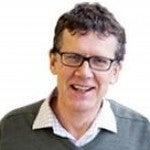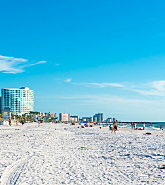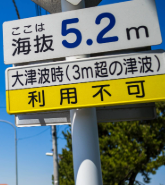The UN meeting room at the Palais de Nations in Geneva is oval shaped and more than 100 feet long with curved desks arranged in a series of “U”-shaped configurations. Behind each desk, delegates sit with their placards. On the long desk at the front, from left to right the placards read “IIASA” (a systems research institute based in Austria), “Mexico,” “Japan,” “Netherlands,” and “Risk Management Solutions.”
What was RMS doing on the podium at the UN?
Last month I presented on investing in disaster risk reduction, giving the modeler’s point of view on how risk modeling can be linked with incentivizing actions to reduce the impacts of disasters.
This was a key meeting of what was called “PrepComm,” aimed at coordinating national action for disaster risk reduction. The first such agreement, known as the Hyogo Framework for Action (the HFA), initiated in 2005, is up for renewal in 2015. The plan is to create a tougher and more tangible set of goals and procedures with demonstrable outcomes to reduce the loss of lives, livelihoods, and wealth in disasters.
In some form, catastrophe risk models or modeled outputs are required for setting and monitoring progress in disaster risk reduction. I often use the story of Haiti to make the point: fewer than ten people were killed in earthquakes in Haiti between 1900 and 2009; then in one afternoon in early 2010, an estimated 200,000 people were killed. You cannot use previous disaster data to measure future disaster risk; the underlying distribution of impacts is so skewed, so fat-tailed, and so unknown, that a decade of disaster outcomes reveals nothing about the mean risk.
The UNISDR—the influential UN agency that focuses on disaster risk—recognized the power of probabilistic modeling five years ago. However, it remains hard to communicate that to monitor progress on disaster risk reduction you will have to find some proxies for impacts, or use a model. That was the subject of my address to this session. Borrowing a quote from Michael Bloomberg, sponsor of the Risky Business study for which RMS was the modeler of all the future coastal and hurricane risks: “if you can’t measure it, you can’t manage it.”
The delegate from Algeria was skeptical about how to get the private sector involved in disaster risk reduction. I told the story of Istanbul, where the government makes deals with developers to demolish and reconstruct the most dangerous apartment buildings, rehousing the original occupants while the developer profits from selling extra apartments.
The Philippines wanted to know about empowering local authorities. My answer: get the future risk-based costs of disasters on their balance sheet.
Austria wanted to spread the idea of labeling the risk on every house. The Democratic Republic of Congo wanted to know why conflict is not considered a natural hazard. There were many questions and points of discussion over the course of the meeting.
When the next iteration of HFA arrives in a few weeks time, we will see how all the advice, debate, and consultation from the UN meeting has been digested. Regardless, when governments sign off on the new protocol in Sendai, Japan next March, catastrophe risk modeling is likely to become a core component of the global disaster risk reduction agenda.
Because as Michael Bloomberg said, “If you can’t measure it, you can’t manage it.”






